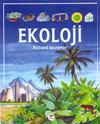Spawning and Larval Rearing in Hybrid Striped Bass (Morone chrysops ♀ X Morone saxatilis ♂) in Turkey
Q3 Environmental Science
引用次数: 1
Abstract
This study is the first spawning and larval rearing of the F1 hybrid striped bass (Morone chrysops ♀ X M. saxatilis ♂) grown in culture conditions in Turkey. The F1 Hybrid striped bass was fed with commercial pellet feed in floating net cages. They reached the sexual maturity at two years old. Female brood fish were given 30 µg/kg of LHRH-a (Lutenizing hormone releasing hormone analogue) and male fish given 10 µg/kg; of CHP(Dried carp pituitary), 4 mg/kg was used for the female and half that amount for the male for induced breeding. The fish injected LHRHa were successfully induced to both strip spawning and tank spawning by a single hormone injection. However, fish injected CPH and saline, untreated control did not spawn. Latency period was found to be 20.41±0.91 hour. In term of fertilization rate, larval deformity rate no significant difference was found between tank spawning and strip spawning (p>0.05).Fertilization rates ranged from 56.3% to 85.4% and hatch rates were between 0.99% and 46.88%, whereas the level of larval deformities ranged between 81.25% and 100%. Hatched larvae were placed into 400-liter rectangular tanks with water discharge of 4 liter/minute at a stocking density of 30 larvae/liter. After larvae hatching, they were given artemia nauplii for 5-19 days. Trout granule feed (300-500 micron) also started to be given in addition to artemia nauplii afterwards. Granule feed was started eating completely 24 th days. The larvae obtained from a single hatch in the production season reached 2.87 cm length in 32 days with 2.7% survival rate. Of this study was terminated due to white spot disease (Ichtyophthirius multifilis) arising from sudden change in water temperature. The F2 progenies were not deemed to be available for aquaculture due to poor fertilization, poor hatching, low survival rate and high deformity rate. For the progenies of the hybrid striped bass that grow in natural water, it was suggested that their ecology in waters in Turkey be first studied and brought into aquaculture afterwards.土耳其杂交条纹鲈鱼(Morone chrysops♀X Morone saxatilis♂)的产卵和幼虫饲养
本研究是F1杂交条纹鲈鱼(Morone chrysops♀X M. saxatilis♂)在土耳其培养条件下的首次产卵和幼虫饲养。采用浮式网箱饲养F1杂交条纹鲈鱼,投喂商品颗粒饲料。他们在两岁时性成熟。雌鱼给予30µg/kg LHRH-a(促黄体素释放激素类似物),雄鱼给予10µg/kg;CHP(干鲤垂体)中,雌性用4 mg/kg,雄性用一半的量进行诱导育种。注射LHRHa的鱼成功地通过单次激素注射诱导条带产卵和池产卵。然而,注射了CPH和生理盐水的鱼,未经处理的对照组没有产卵。潜伏期为20.41±0.91小时。在受精率、幼虫畸形率方面,池产卵与条形产卵间无显著差异(p < 0.05)。受精率为56.3% ~ 85.4%,孵化率为0.99% ~ 46.88%,幼虫畸形率为81.25% ~ 100%。将孵化的幼虫放入400升的矩形水箱中,放水量为4升/分钟,放养密度为30只/升。幼虫孵化后,给药5 ~ 19 d。鳟鱼颗粒饲料(300-500微米)也开始给予之后,除了青蒿nauplii。第24天开始完全饲喂颗粒饲料。产季单次孵化获得的幼虫32 d体长2.87 cm,成活率2.7%。本研究因水温突然变化引起白斑病(多鳞鱼斑病)而终止。F2后代受精差、孵化差、成活率低、畸形率高,不适于养殖。对于在自然水体中生长的杂交条纹鲈鱼后代,建议先研究其在土耳其水域的生态,然后再引入养殖。
本文章由计算机程序翻译,如有差异,请以英文原文为准。
求助全文
约1分钟内获得全文
求助全文
来源期刊

Ekoloji
环境科学-生态学
CiteScore
1.10
自引率
0.00%
发文量
0
审稿时长
>12 weeks
期刊介绍:
Cessation. Ekoloji is an international journal that focuses on papers that report results from original research on all disciplines engaged in the field of environmental research. We welcome articles that cover the entire spectrum of environmental problems and environmental pollutants, whether chemical, biological or physical. Its coverage extends to all environmentally related issues: air and water pollution, solid waste, noise, recycling, natural resources, ecology and environmental protection. It includes articles on basic and applied environmental pollution research, including environmental engineering and environmental health. All types of pollution are covered, including atmospheric pollutants, detergents, fertilizers, industrial effluents, metals, mining wastes, oil, pesticides, plastics, radioactive materials and sewage. It also includes research papers on ecological and environmental issues such as climate change, biodiversity. The primary criteria for publication are scientific quality and ecological/environmental significance.
The journal will be read and contributed to by biologists, applied ecologists, environmental scientists, natural resource specialists, environmental engineers, environmental health specialists, agro-ecologists, veterinaries, agricultural engineers, landscape planners and designers. The journal welcomes full "research papers" and short "research notes", only in the English language.
 求助内容:
求助内容: 应助结果提醒方式:
应助结果提醒方式:


